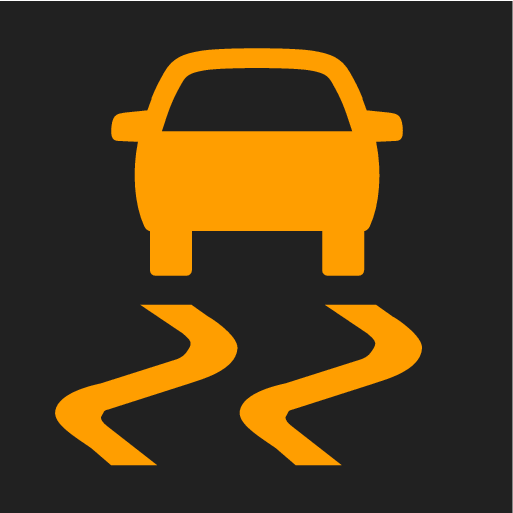
The activation of the ESC system during braking may be noticed as a throbbing sound. The car may accelerate slower than expected when the accelerator pedal is depressed.
Warning
The stability system ESC is supplementary assistance - it cannot handle all situations in all road conditions.
The driver always bears responsibility that the vehicle is driven safely and that applicable road traffic rules and regulations are followed.
The ESC system consists of the following functions:
- Active Yaw Control
- Spin Control
- Traction control system
- Engine Drag Control
- Trailer stability assist
Active Yaw Control
The function checks the driving and brake force of the wheels individually in order to stabilise the car.
Spin Control
The function prevents the driving wheels from spinning against the road surface during acceleration.
Traction control system
The function is active at low speed and transfers power from the driving wheel that is spinning to the one that is not.
Engine Drag Control
Engine Drag Control (Engine Drag Control — EDC) prevents involuntary wheel locking, e.g. after shifting down or engine braking when driving in low gear on slippery road surfaces.
Involuntary wheel locking while driving can, amongst other things, impair the driver's ability to steer the car.
Trailer stability assist*1
The function of trailer stability assist (Trailer Stability Assist - TSA) is to stabilise a car with attached trailer in situations where snaking occurs. For more information, see the “Driving with a trailer” section.